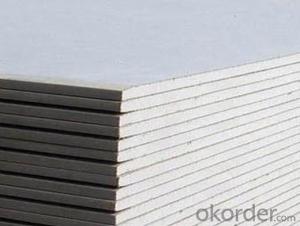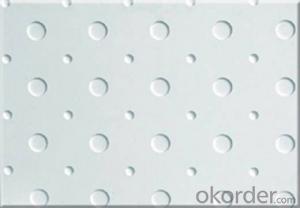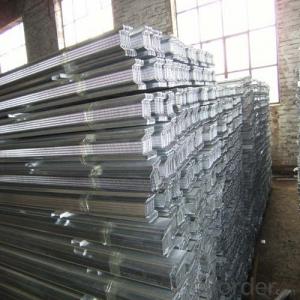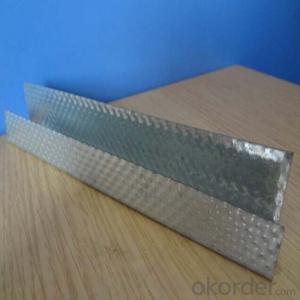Stainless Steel Material
Stainless Steel Material Related Searches
Raw Material For Solar Cells Ac Inverter For Solar Panels Plastic Wall Coverings For Bathrooms Fiberglass Sheets For Roofing Heat Reflective Material For Roof Wall Panels For Basement Felt Paper For Roofing Retaining Wall With Geogrid Plastic Coated Steel Roofing Sheets High Quality Roofing FeltHot Searches
Steel Mesh Panels For Sale Cheap High Tea Sets For Sale Cheap Solar Cells For Sale Q Cells Solar Panels For Sale Used Foam Board Insulation For Sale Welded Wire Panels For Sale Types Of Temporary Side Panels For Cement Deck Fiberglass Panels For Sale Magnesium Oxide Board For Sale Hdf Board For Sale sintra board for sale Cheap Mini Laptops For Sale Plywood For Sale Cheap Sandwich Panels For Sale resin panels for sale Cheap Washers For Sale Cheap Tall Vases For Sale Eps Panels For Sale Air Conditioner For Cheap Prices Gypsum Board Price Per Sheet In IndiaStainless Steel Material Supplier & Manufacturer from China
Okorder.com is a professional Stainless Steel Material supplier & manufacturer, offers integrated one-stop services including real-time quoting and online cargo tracking. We are funded by CNBM Group, a Fortune 500 enterprise and the largest Stainless Steel Material firm in China.Hot Products
FAQ
- Stainless steel pipes are a great choice for pharmaceutical applications. They are made from a highly durable and corrosion-resistant material that is extensively used in the pharmaceutical industry for a range of purposes, including transporting and storing pharmaceutical products, constructing equipment, and process piping. One of the primary benefits of stainless steel pipes is their ability to resist corrosion, which is crucial in pharmaceutical settings where preventing contamination is of utmost importance. Stainless steel can withstand a wide range of chemicals and aggressive substances, ensuring that the quality and integrity of pharmaceutical products remain intact. Moreover, stainless steel pipes offer excellent hygienic properties. They are easy to clean and sterilize, making them ideal for pharmaceutical applications that require strict cleanliness standards. The smooth and non-porous surfaces of stainless steel pipes have minimal bacterial adhesion, making it simpler to maintain a sterile environment. In addition to their corrosion resistance and hygienic properties, stainless steel pipes are also known for their high strength and durability. They can endure high temperatures and pressures, making them suitable for various pharmaceutical processes. Stainless steel pipes also possess exceptional mechanical properties, such as impact resistance and fatigue strength, ensuring long-lasting performance and minimizing the risk of failures in pharmaceutical applications. Overall, stainless steel pipes are widely utilized in the pharmaceutical industry due to their corrosion resistance, hygienic properties, and durability. They provide a dependable and secure solution for transporting and storing pharmaceutical products while maintaining a clean and sterile environment.
- Stainless steel pipes, being resistant to corrosion and staining, are highly durable and long-lasting. Their inherent corrosion resistance eliminates the need for extra coatings or treatments. The presence of chromium in the alloy composition creates a protective oxide layer on the surface, preventing rust and corrosion. As a result, stainless steel pipes can be used in various applications without the necessity of special coatings for protection.
- What are the weld sleeves for stainless steel pipes?
- Quota refers to the quantity standard of manpower, material resources, financial resources and time consumed by qualified units under certain technical and organizational conditions. In the labor organization reasonable and rational use of materials and machinery under the condition of a predetermined number of resources consumed by the completed units qualified product standards, the level of social productive forces, it reflects the level of a certain period of time. For each construction project, the amount of labor is calculated, including basic labor and other labor. Plus the materials for this project, including basic materials and other materials. The unit price is based on the labor value of the different types of work at that time. The value of the material is the budgeted price based on the previous market price.
- Yes, stainless steel pipes can be used for underground drainage. Stainless steel is a highly durable and corrosion-resistant material, making it suitable for various applications, including underground drainage systems. It offers excellent resistance to rust, corrosion, and chemical damage, ensuring a long lifespan and minimal maintenance requirements. Additionally, stainless steel pipes have high strength and can withstand high-pressure conditions, making them ideal for underground drainage where they may encounter external load or stress. Furthermore, stainless steel pipes are known for their smooth inner surface, which helps to prevent clogs and facilitate the efficient flow of water and waste. Overall, stainless steel pipes are a reliable and long-lasting choice for underground drainage systems.
- On the market, you can find various stainless steel pipe insulation options. These options differ in terms of their material composition, construction, and insulation properties. One popular option is fiberglass insulation, which involves wrapping a layer of fiberglass material around the stainless steel pipe. This type of insulation is known for its exceptional thermal insulation properties and its ability to withstand high temperatures. It is also resistant to moisture, making it suitable for both indoor and outdoor use. Another option is foam insulation, which is made from a foamed plastic material like polyurethane or polystyrene. Foam insulation is lightweight, easy to install, and provides good thermal and acoustic insulation. It is commonly used in residential and commercial buildings to insulate hot water pipes and HVAC systems. Additionally, there are elastomeric insulation materials, which are flexible rubber-like materials that can be easily wrapped around the stainless steel pipe. These materials are recognized for their excellent thermal insulation properties and their ability to resist moisture and condensation. Elastomeric insulation is frequently used in refrigeration and air conditioning systems. Lastly, there are pre-insulated stainless steel pipe systems, which come with a layer of insulation material already applied to the stainless steel pipe. This type of insulation is commonly used in industrial applications where thermal insulation is critical, such as in chemical plants or oil refineries. To sum up, the available options for stainless steel pipe insulation include fiberglass insulation, foam insulation, elastomeric insulation, and pre-insulated pipe systems. The choice of insulation type depends on factors such as the specific application, desired insulation properties, and budget.
- Stainless steel pipes are generally more durable, have higher heat resistance, and are better suited for high-pressure applications compared to PVC pipes. While PVC pipes are lightweight, cost-effective, and easier to install, they are prone to cracking, chemical reactions, and may not be suitable for certain environments. Therefore, the choice between stainless steel and PVC pipes depends on the specific needs of the application.













































